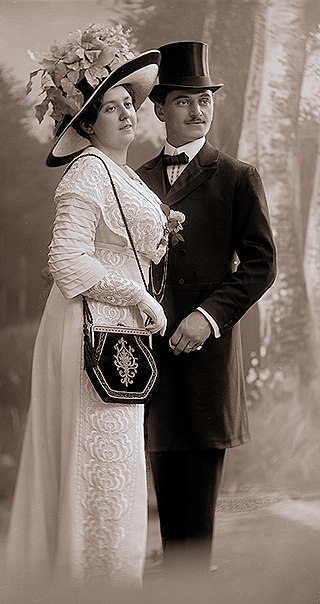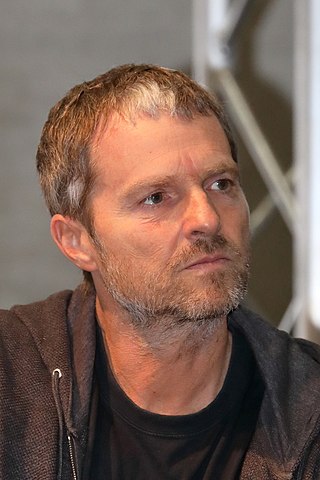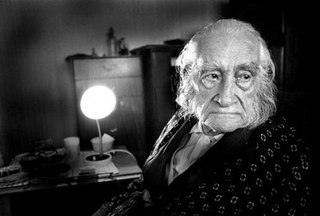
Alfred Eisenstaedt was a German-born American photographer and photojournalist. He began his career in Germany prior to World War II but achieved prominence as a staff photographer for Life magazine after moving to the U.S. Life featured more than 90 of his pictures on its covers, and more than 2,500 of his photo stories were published.

Street photography is photography conducted for art or enquiry that features unmediated chance encounters and random incidents within public places. Although there is a difference between street and candid photography, it is usually subtle with most street photography being candid in nature and some candid photography being classifiable as street photography. Street photography does not necessitate the presence of a street or even the urban environment. Though people usually feature directly, street photography might be absent of people and can be of an object or environment where the image projects a decidedly human character in facsimile or aesthetic.

Jan Saudek is an art photographer and painter.

Adolf Zika is a Czech photographer.

Josef Jindřich Šechtl was a Czech photographer who specialized in photojournalism and portrait photography. On the death of his father, photographer Ignác Šechtl, Josef inherited the photographic studios of Šechtl & Voseček.

Manfred Baumann is an Austrian photographer. Manfred is best known for his portraits of celebrities, Landscape, wildlife and Street Photography.

Emil Otto Hoppé was a German-born British portrait, travel, and topographic photographer active between 1907 and 1945. Born to a wealthy family in Munich, he moved to London in 1900 to train as a financier, but took up photography and rapidly achieved great success.

Markéta Luskačová is a Czech photographer known for her series of photographs taken in Slovakia, Britain and elsewhere. Considered one of the best Czech social photographers to date, since the 1990s she has photographed children in the Czech Republic, Slovakia, and also Poland.
Red Bull Illume is an international photography contest for adventure and action sports photography. It showcases creative and captivating photography and aims to bring the public closer to the world of adventure and action sports. Every year, Red Bull Illume has several partners on its side, who foster the Red Bull Illume Image Quest. In 2021, its sixth edition, Red Bull Illume added the new category Photo Story. 41,447 images were submitted by thousands of photographers with entries from all around the world. A judging panel of 53 photo editors and digital experts selected 56 Finalists, 11 Category Winners and 1 Overall Winner, which were unveiled for the first time ever on Instagram Live and the Red Bull Illume Website. The Overall Winner was Will Saunders. The next Red Bull Illume Image Quest will take place in 2023.

Miroslav Tichý was a photographer who from the 1960s until 1985 took thousands of surreptitious pictures of women in his hometown of Kyjov in the Czech Republic, using homemade cameras constructed of cardboard tubes, tin cans and other at-hand materials. Most of his subjects were unaware that they were being photographed. A few struck beauty-pageant poses when they sighted Tichý, perhaps not realizing that the parody of a camera he carried was real.

Karel Plicka was a Czechoslovak photographer, film director, cinematographer, folklorist, and pedagogue. He is considered a founder of Slovak film education and filmmaking. He helped establish the genre of ethnographic film in Czechoslovakia.
Joyce Olga Evans, B.A., Dip. Soc. Stud. was an Australian photographer active as an amateur from the 1950s and professional photographic artist from the 1980s, director of the Church Street Photography Centre in Melbourne (1976–1982), art curator and collector, and tertiary photography lecturer.
Willard "Herc" Detering Morgan was a photographer, writer, editor, and educator and the husband of photographer Barbara Morgan, known for her documentation of Martha Graham's dances.

Cecil Westmoreland Bostock (1884–1939) was born in England. He emigrated to New South Wales, Australia, with his parents in 1888. His father, George Bostock, was a bookbinder who died a few years later in 1892.

John Cyril "Jack" Cato, F.R.P.S. was a significant Australian portrait photographer in the Pictorialist style, operating in the first half of the twentieth century. He was the author of the first history of Australian photography; The Story of the Camera in Australia (1955)

Axel Poignant was an Australian photographer.
Matt Stuart (1974) is a British street photographer. He was a member of the In-Public street photography collective. Stuart also works as an advertising photographer.
Jesse Marlow (1978) is an Australian street photographer, editorial and commercial photographer who lives and works in Melbourne.
Liz Ham is an English-born Australian photographer based in Sydney, Australia. Ham has photographed urban life, fashion, music and politics for years and in 2017 published a photography book called Punk Girls. Some of Ham's photographs have been purchased and archived by Australia National Libraries as representations of the culture of Australia.
Craig Semetko is an American street photographer and speaker based in Los Angeles. He is known for the strong sense of humor and irony that appears in his candid and spontaneous photos of everyday life. He teaches workshops around the world and his photography has been exhibited in the United States, Europe, and Asia.













